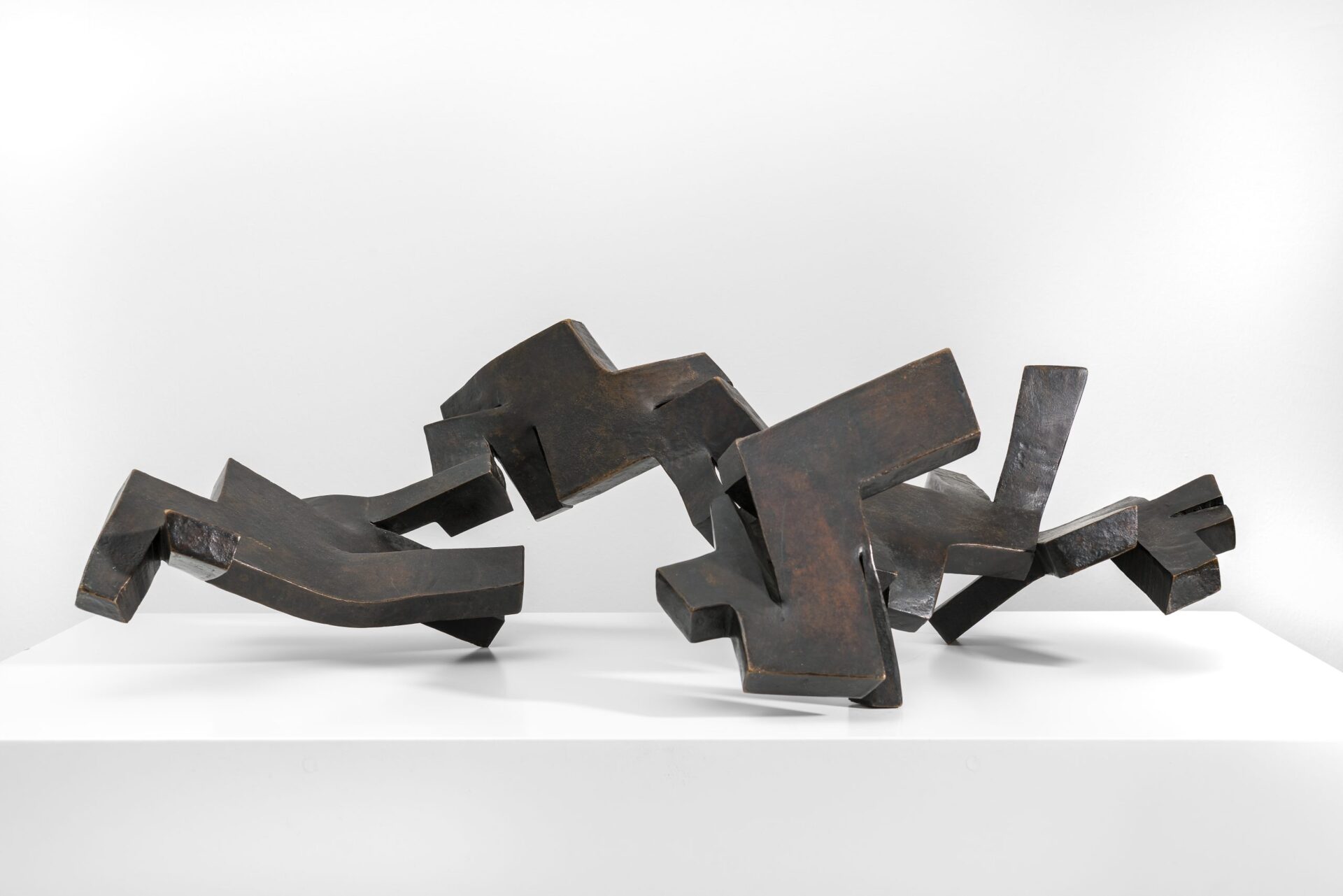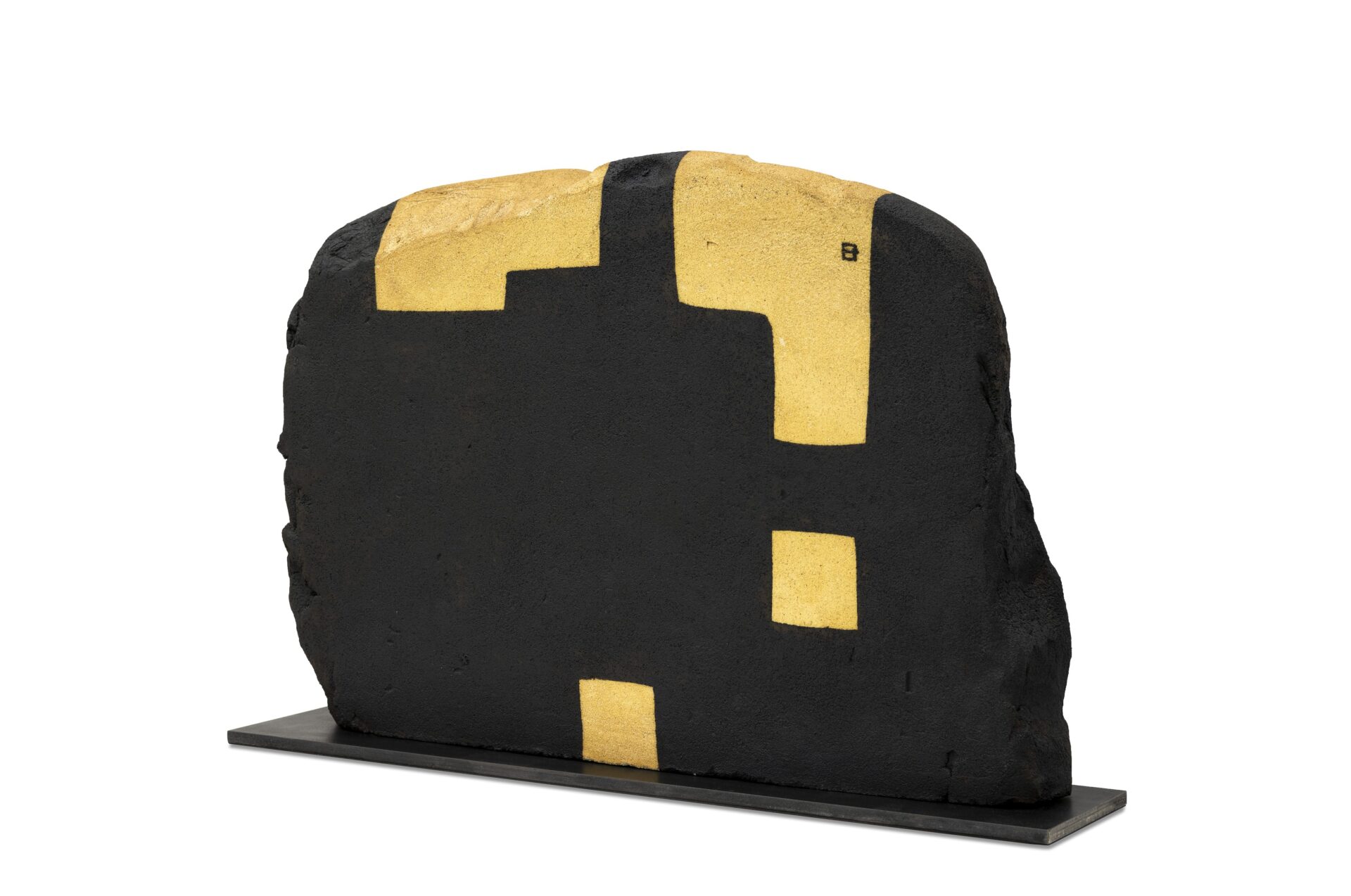Eduardo Chillida is undoubtedly the most distinguished Spanish sculptor of the second half of the twentieth century. As first-choice goalkeeper for the Real Sociedad football team, he had to abandon his sporting career due to a knee injury. At the age of nineteen he began studying architecture in Madrid, which he subsequently abandoned to devote himself to sculpture and drawing, attending classes at the Círculo de Bellas Artes in Madrid.
In 1948 he moved to Paris, where he began his artistic career and met Pablo Palazuelo. He later returned to San Sebastián and as the years went by he started working at the forge in Hernani. This experience was crucial, as it gave him the opportunity to discover the use of iron and the sculptural potential of this material.
Although his earliest works remained within the figurative realm, he soon began to investigate abstraction, turning emptiness into an essential element of his work with the aim of exploring the limits of space.
Iron was to be one of his prime materials, although he worked with many others, including concrete, weathering steel, wood, alabaster, terracotta and paper, with which he developed an outstanding body of graphic work.
Monumental sculpture was one of the main disciplines on which he focused his art. Many of these works have become symbols of the cities that host them, such as the Peine del viento in San Sebastián or the Elogio del horizonte in Gijón. Other monumental pieces of his are Berlin, made for the German Chancellery in Berlin, Elogio del agua in the Creueta del Coll Park in Barcelona, La casa de Goethe in Frankfurt, Peine del viento IV for the UNESCO headquarters in Paris and Alrededor del vacío V for the World Bank headquarters in Washington, DC.
Chillida always felt very attached to his homeland, the Basque Country. As he said: “Here, in my Basque country, I feel at home, like a tree suited to its territory, in its own terrain but with its arms open to the whole world.”1 However, his first exhibition in his native city, San Sebastián, did not take place until 1992, at the Miramar Palace, when the artist was already sixty-eight.
In any case, if there was one driving force behind Chillida’s work, it was curiosity and his desire to know. In his own words: “What I know how to do I must have done already, so I always have to do what I don’t know how to do.”2
The numerous awards and distinctions he received notably include the International Grand Prize of the 29th Venice Biennale (1958), the Kandinsky Prize (1960), the Carnegie Prize for Sculpture in Pittsburgh (1964), the Wolf Prize awarded by the Israeli Parliament (1985), the Prince of Asturias Award for the Arts (1987), the Praemium Imperiale of Japan (1991) and the Jack Goldhill Award for Sculpture granted by the Royal Academy of Arts in London (1996).
In the year 2000 the Chillida-Leku Museum opened to the public in the Zabalaga farmhouse, his former studio. The museum is located in a traditional Basque building where a remarkable dialogue takes place between Chillida’s works and the setting in which many of them were created.
The Hortensia Herrero collection includes two important sculptures by Chillida: one in terracotta and another in bronze. The latter is one of the few works of his produced in series, an edition of three copies, one of which belongs to the collection of the Galleria Nazionale d’Arte Moderna Ca’ Pesaro in Venice. This sculpture has been lent by Hortensia Herrero for important exhibitions in France and Germany.

